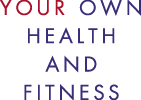The San Francisco Chronicle’s Sunday edition featured an article on nuclear power as the green energy alternative. The article focused on how to economically meet a dramatic increase in electricity demand that’s projected over the next 30 years.
While reading about the virtues of nuclear technology, I searched in vain for any mention of nuclear’s health risks or how we are to dispose of spent fuel rods that remain deadly for tens of thousands of years.
If the problem is that we have to supply 50% more electricity over the next 30 years cheaply and at the same time keep a lid on greenhouse gases, then looking to nuclear might make some sense. But if the problem is how we safely meet our energy needs, then nuclear goes out the window pretty fast.
This is how the precautionary principle is supposed to work. Solving a problem isn’t about evaluating a limited number of technologies. It’s about actively understanding what we’re trying to accomplish and then finding what will do that, whether it’s a technology or not.
I’m a member of Media Alliance, a terrific Bay Area organization that advocates for open access to information. But Media Alliance has become mesmerized by a technology: it actively promotes the installation of citywide wireless technology in San Francisco and celebrates other cities doing the same. The reason for Media Alliance’s enthusiasm is their commitment to closing the digital divide—the dramatic inequality in access to the Internet and its resources.
As you know, on this program we regularly discuss the potential health risks associated with wireless technologies and exposures to radio frequency radiation. On several occasions, I’ve communicated those concerns to Media Alliance. The first time was last fall at a conference. I had an extended discussion with Media Alliance representatives. I offered myself and Layna as resources. I was reassured that grassroots organizations had recently made Media Alliance aware of wireless health issues and that they would incorporate that information into their advocacy.
Two months later, I checked the Media Alliance website. I was surprised to find none of the promised information on wireless health risks and that the organization continued to promote the public health benefits of wireless. The only health information came from the FCC accompanied by ill-informed assurances that, for example, since hospitals have wireless, it must be safe. I sent email with no effect.
Never mind that simply installing citywide wireless doesn’t include the computers the poor will need to actually access the Internet or the training they’ll need to use it effectively. Never mind that Media Alliance, however noble its intentions, does itself no credit by limiting access to information that would enable people to make an informed decision about wireless.
The digital divide is a symptom of inequity. Empowerment overcomes inequity by enabling us to take care of ourselves. For which we need access to credible information. From what I know, one of the best ways to do that is through human contact. More difficult and more expensive than plugging in a box, it’s also much more to the point.
The issues in this article are developed (with references) in issue #8 of the Progressive Health Observer in the article titled “The WiFi Blues.”
Related resources are available on the Radiation page.

